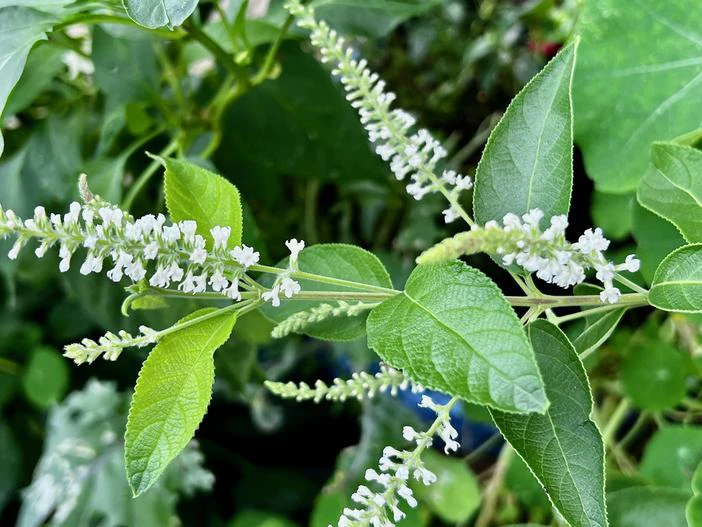Sweet Almond Bush
(Aloysia virgata)
Sweet Almond Bush (Aloysia virgata)
/
/

F Delventhal
CC BY 2.0
Image By:
F Delventhal
Recorded By:
Copyright:
CC BY 2.0
Copyright Notice:
Photo by: F Delventhal | License Type: CC BY 2.0 | License URL: https://creativecommons.org/licenses/by/2.0/ | Uploader: krossbow | Publisher: Flickr

























Estimated Native Range
Climate Requirements for Delhi, India
| This Plant | Your Site | Plant Suitability for Your Location | ||
|---|---|---|---|---|
| • Precipitation | 7" - 140" | 29" | Your precipitation may be insufficient for this plant. Irrigate N" / year. | Irrigate N" / year |
| • High Temp. | 59°F - 98°F | 104°F | Your summers may be too hot for this plant. | Too hot |
| • Low Temp. | 15°F - 73°F | 46°F | Your winter temperatures are normal for this plant | Excellent |
This plant should grow well at your location with about N inches per year (Y minutes per month) of irrigation.
Summary
Aloysia virgata, commonly known as Sweet Almond Bush, is a semi-deciduous shrub native to Argentina and other parts of South America. It typically grows to a height of 8 to 15 feet and spreads about 8 feet wide. The plant features clusters of small, white, almond-scented flowers that bloom from summer to fall, attracting butterflies and hummingbirds. Its leaves are lanceolate and bright green, adding to its visual appeal. The Sweet Almond Bush is recognized for its aromatic foliage and flowers, which emit a pleasant almond fragrance when brushed against or after rainfall.
Sweet Almond Bush is valued for its ease of maintenance and the sweet almond fragrance that enhances sensory gardens. It is suitable for urban planting, border planting, and as a specimen shrub in residential gardens. It thrives in full sun but can tolerate part shade, and prefers well-drained soils with low to medium water requirements. While it is drought-tolerant once established, regular watering promotes better flowering. It is hardy in USDA zones 7 to 9 and can be propagated through cuttings or layering. Pruning can be done to maintain its shape and encourage bushier growth. Potential problems include susceptibility to root rot in poorly drained soils and occasional pest issues such as aphids.CC BY-SA 4.0
Sweet Almond Bush is valued for its ease of maintenance and the sweet almond fragrance that enhances sensory gardens. It is suitable for urban planting, border planting, and as a specimen shrub in residential gardens. It thrives in full sun but can tolerate part shade, and prefers well-drained soils with low to medium water requirements. While it is drought-tolerant once established, regular watering promotes better flowering. It is hardy in USDA zones 7 to 9 and can be propagated through cuttings or layering. Pruning can be done to maintain its shape and encourage bushier growth. Potential problems include susceptibility to root rot in poorly drained soils and occasional pest issues such as aphids.CC BY-SA 4.0
Plant Description
- Plant Type: Herb, Shrub
- Height: 5-15 feet
- Width: 3-8 feet
- Growth Rate: Moderate
- Flower Color: White
- Flowering Season: Summer, Fall
- Leaf Retention: Semi-Deciduous
Growth Requirements
- Sun: Full Sun, Part Shade
- Water: Low, Medium
- Drainage: Medium, Fast
Common Uses
Bee Garden, Bird Garden, Border Plant, Butterfly Garden, Drought Tolerant, Fragrant, Hummingbird Garden, Potted Plant, Street Planting
Natural Habitat
Native to Argentina and other parts of South America
Other Names
Common Names: Sweet Almond Verbena
Scientific Names: Aloysia virgata, Lippia virgata, Verbena virgata, Priva virgata, Zappania virgata
GBIF Accepted Name: Aloysia virgata (Ruiz & Pav.) Juss.